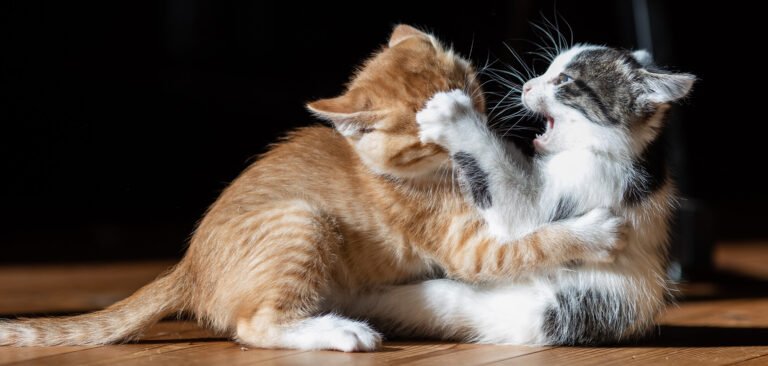Cats are known for their independent and solitary nature, but they can be social animals when they choose to be. If you’re a cat owner with multiple feline friends, you may have encountered the hissing, growling, and full-blown battles that can sometimes erupt between them. Understanding why cats fight and how to prevent these feuds is essential for a harmonious multi-cat household.
Why Do Cats Fight?
Before diving into conflict resolution, let’s explore the reasons why cats fight:
- Territorial Disputes: Cats are territorial creatures. If they feel their space is invaded, they may become aggressive to protect it.
- Social Hierarchy: In a multi-cat household, establishing a hierarchy is natural. Cats may fight to determine their rank within the group.
- Resource Competition: Cats can be possessive about food, toys, or even your attention. Competing for these resources can lead to conflict.
- Fear or Stress: Cats might lash out when they feel threatened or stressed. New environments, changes in routines, or the addition of a new cat can trigger fear-based aggression.
- Play Escalation: Cats play-fight to hone their hunting skills. Sometimes, these playful encounters can turn into real conflicts.

How to Distinguish Real Cat Fights
Distinguishing between playful cat interactions and genuine cat fights can sometimes be challenging. Here are some signs to help you recognize real cat fights:
- Aggressive Vocalizations: Listen for growling, hissing, and yowling.
- Full-Contact Combat: Cats that are locked together and in a genuine fight may cause harm to each other.
- Aggressive Body Language: Watch for signs like puffed-up tails, arched backs, tense posture, low body position, and ears pinned back.
- Intense Staring: Real cat fights often involve wide-eyed stares, blank expressions, and infrequent blinking.
How to Prevent Cat Fights
Now that you understand why cats fight, let’s discuss strategies to prevent these feuds:
- Spay or Neuter Your Cats: Unaltered cats are more likely to engage in aggressive behavior. Spaying and neutering can reduce aggression significantly.
- Provide Adequate Resources: Ensure that each cat has access to food, water, litter boxes, and toys. This minimizes resource competition.
- Create Separate Safe Spaces: Set up multiple resting areas and hiding spots. Cats can retreat to these spaces when they need some alone time.

- Play and Enrichment: Regular play sessions and interactive toys can help redirect your cats’ energy and keep them mentally stimulated.
- Positive Reinforcement: Reward good behavior with treats, pets, and affection. Encourage peaceful interactions and discourage aggressive ones.
- Gradual Introductions: When adding a new cat to the household, introduce them slowly. Start with scent swapping before allowing visual and physical contact.
- Consult a Veterinarian: If you notice a sudden change in behavior or aggression, consult your vet. Underlying medical issues could be causing the problem.
- Consult a Cat Behaviorist: For severe cases, seeking the advice of a professional cat behaviorist can provide tailored solutions.
Cats may engage in occasional skirmishes, but with the right approach, you can ensure that these conflicts don’t escalate into a constant battle. Understanding the reasons behind cat fights and taking proactive measures to prevent them is the key to a peaceful coexistence in your feline-friendly home.


Pingback: How to Introduce Cats to Each Other